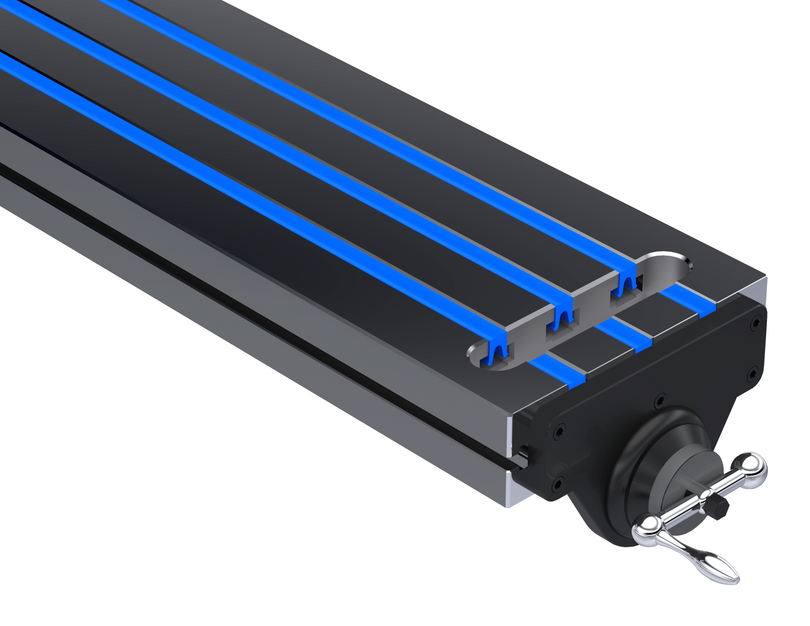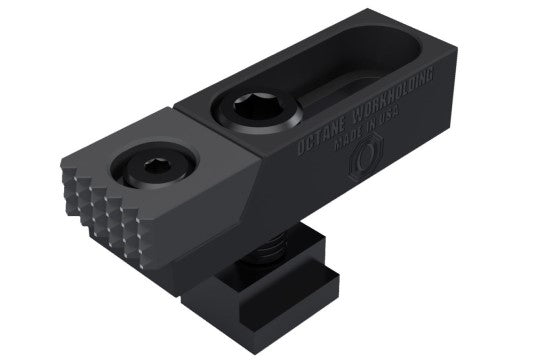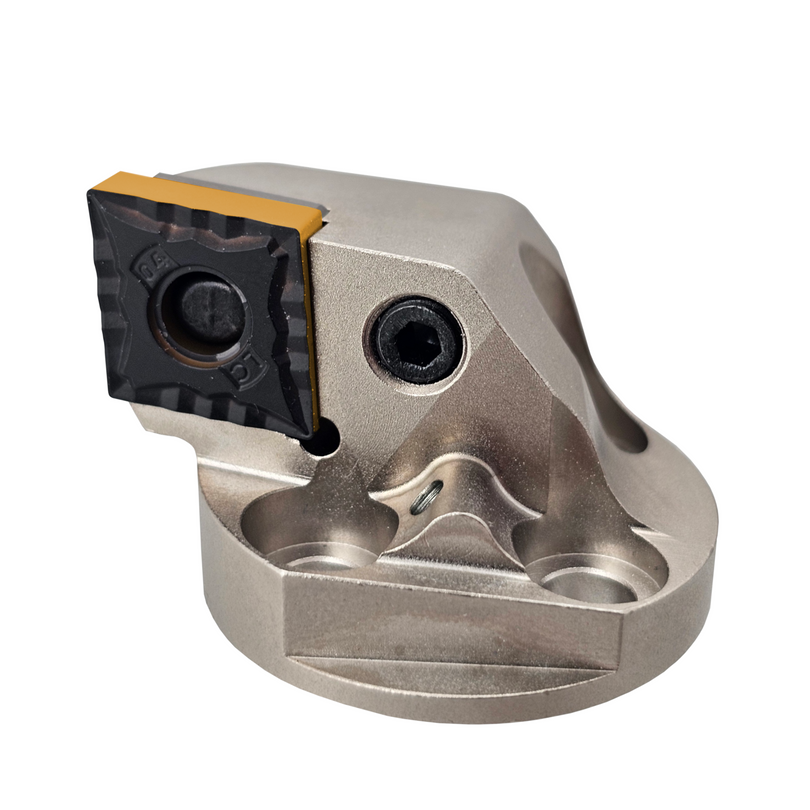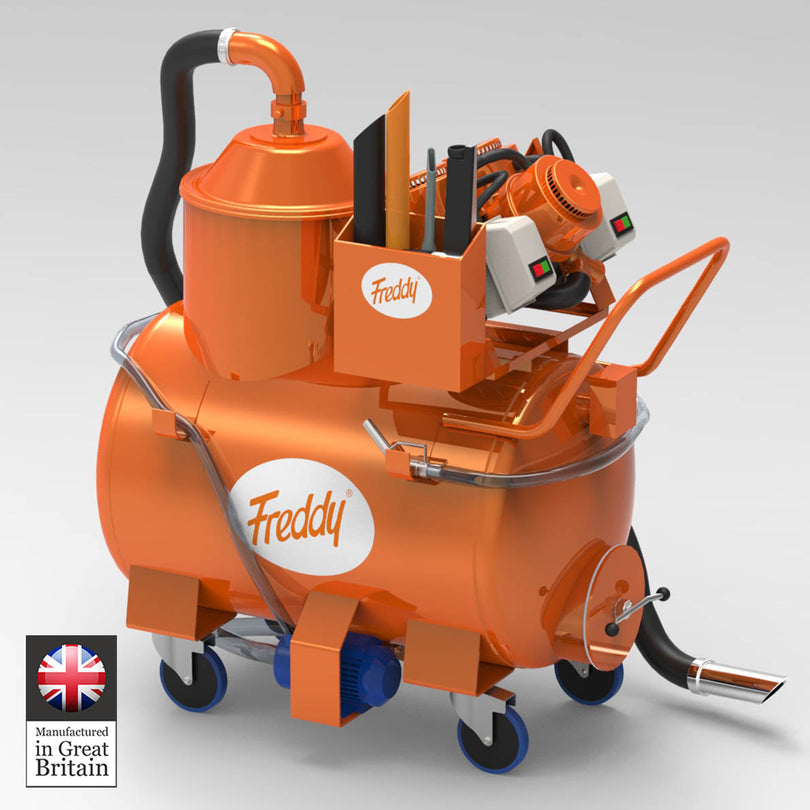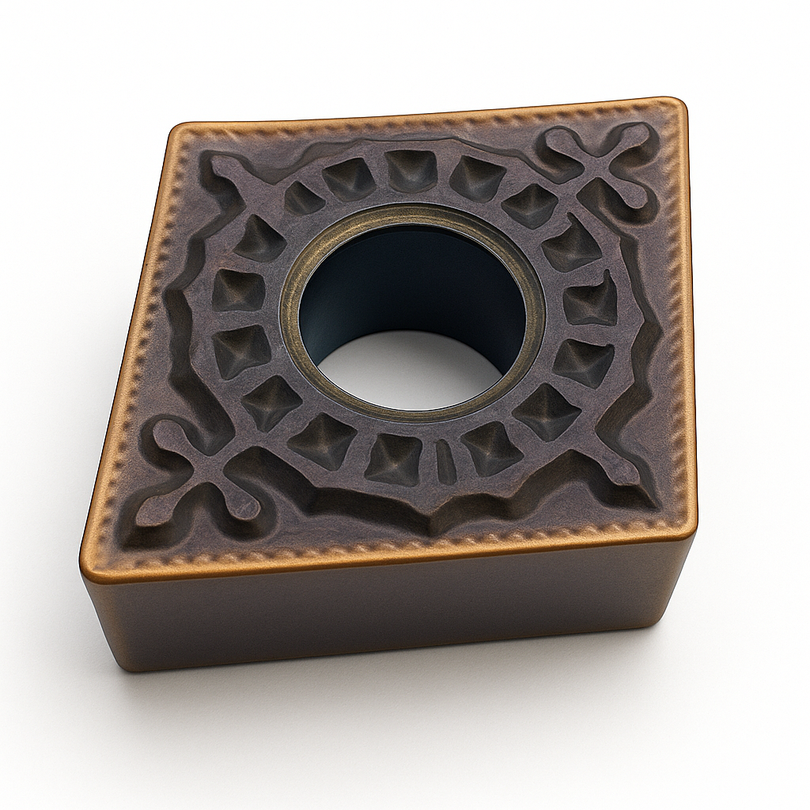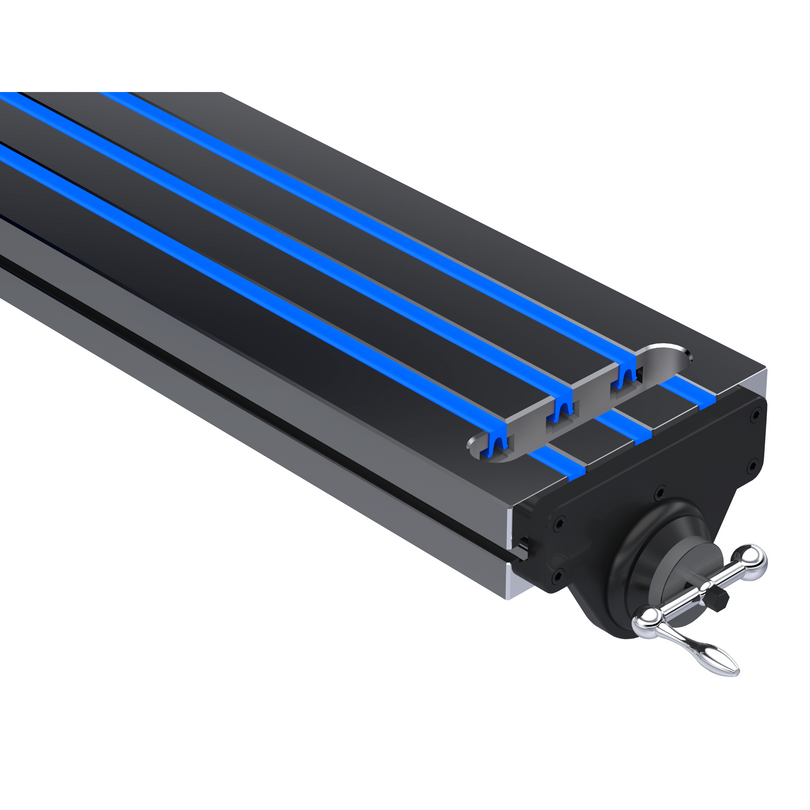Guidlines Below
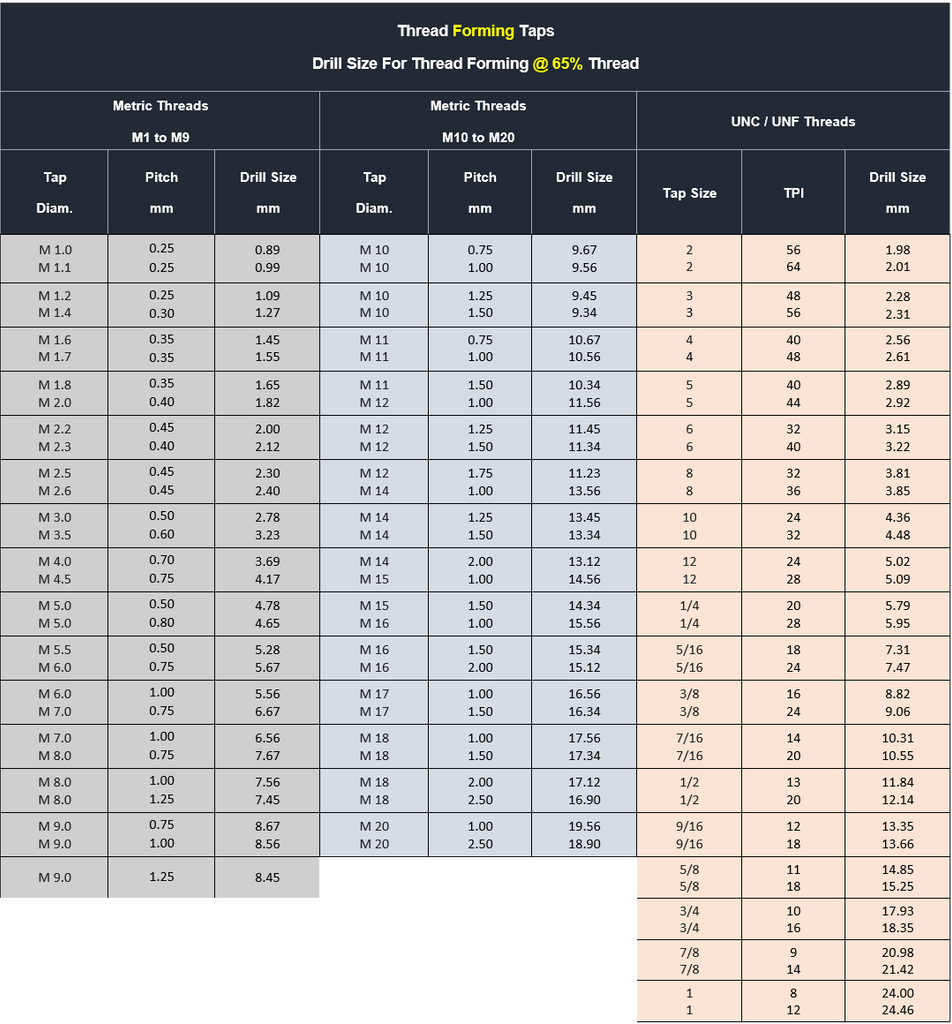

Form tapping is often utilized when tackling deep hole applications, difficult materials, or any process that is prone to tap breakage.
- Chipless Tapping - No chips are created when form tapping, the material is simply displaced into the thread shape. This makes form tapping ideal for blind holes, especially in materials like copper and stainless steel.
- Tap Strength - Form taps do not have conventional flutes which means the tap has more supporting material and rigidity vs. cut taps.
- More Consistency - Without random chips smearing or wiping out threads accidently, form taps gauge more uniformly.
- Tool Life - Form taps can last multiple times longer than cut taps with the right recipe, there is simply less wear as the tap does not rely on sharp cutting edges.
- Consistency - Tool load is consistent throughout the tapping operation. With cut taps, the point at which the tap reverses to retract is often the most critical. With form taps, the load is often less upon reversal.
Main Considerations
- Pre Tap Hole Size - Reaming is always recommended. Select the closest drill size possible for the thread percentage desired. It is possible to enlarge a hole slightly if tap breakage is an issue, so long as the hole still gauges correctly. A combination of tap class of fit and pre tap hole size can be experimented with to find the perfect strategy.
- Lubricity - Forming taps require good lubrication. Cutting oils are generally preferred because of their lubricity compared to water soluble coolants. We often use dedicated tapping fluid when possible vs. flood coolant.
- Material Hardness - Hardened materials over 30 HRC can be problematic when form tapping, is this case thread milling is recommended.


